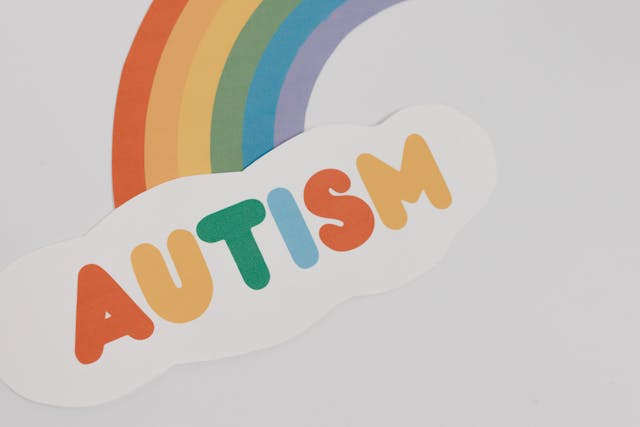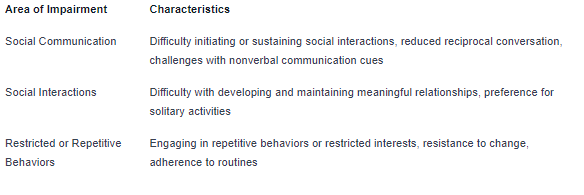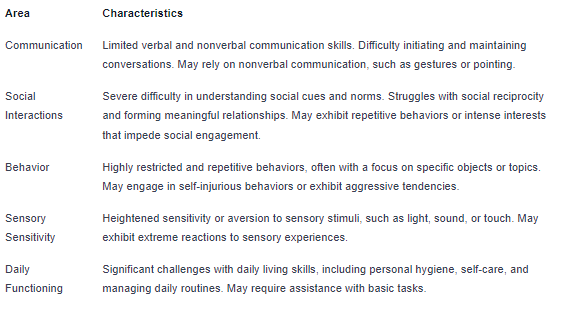The 3 Levels of Autism
Unveiling the 3 levels of autism: Gain insights into characteristics and supportive strategies for each level.

Understanding Autism Spectrum Disorder
Autism Spectrum Disorder (ASD) is a complex neurodevelopmental disorder that affects individuals in various ways. It is characterized by difficulties in social interaction, communication, and repetitive behaviors. Autism is a spectrum disorder, meaning that it encompasses a wide range of symptoms and levels of severity. Understanding the spectrum is crucial for gaining insight into the diverse experiences of individuals with autism.

What is Autism Spectrum Disorder?
Autism Spectrum Disorder (ASD) is a lifelong condition that typically manifests in early childhood. It affects the way individuals perceive and interact with the world around them. People with ASD may have challenges in social communication and may exhibit restricted and repetitive patterns of behavior, interests, or activities.
ASD is a spectrum disorder because it encompasses a broad range of symptoms and levels of functioning. The severity and combination of symptoms can vary significantly from person to person. Therefore, it is more accurate to refer to autism as a spectrum rather than a single condition.
Importance of Understanding the Spectrum
Understanding the autism spectrum is crucial for several reasons. Firstly, it allows us to recognize the diversity within the autism community. Each individual with autism is unique, with their own strengths, challenges, and needs. By understanding the spectrum, we can appreciate and respect these differences, promoting inclusivity and acceptance.
Secondly, understanding the spectrum helps us tailor support and interventions to meet the specific needs of individuals with autism. Different levels of support are required depending on the severity of symptoms and the individual's level of functioning. Recognizing these differences allows for the implementation of targeted strategies and resources that can enhance the quality of life for individuals with autism.
Lastly, understanding the spectrum promotes awareness and reduces misconceptions about autism. By educating ourselves and others about the different levels of autism, we can challenge stereotypes and promote a more accurate and compassionate understanding of autism.
By delving into the three levels of autism, we can gain a deeper understanding of the specific characteristics and supportive strategies associated with each level. This knowledge can guide us in providing appropriate support and creating an inclusive environment that celebrates the diversity of individuals with autism.
The 3 Levels of Autism
Autism Spectrum Disorder (ASD) is a complex neurodevelopmental condition that manifests differently in individuals. To better understand the range of experiences, autism is categorized into three levels based on the level of support required. These levels help professionals and caregivers tailor interventions and support strategies to meet the unique needs of individuals with autism.
Level 1: Requiring Support
Level 1 autism is characterized by mild impairments in social communication, social interactions, and restricted or repetitive behaviors. Individuals at this level typically require some support to navigate social situations and may experience challenges with flexible thinking and adapting to changes. However, they can generally function independently in daily life.
Characteristics of Level 1 Autism

Supportive Strategies for Level 1 Autism
To support individuals with level 1 autism, various strategies can be implemented:
- Social skills training: Providing structured interventions to improve social communication and interaction skills.
- Visual supports: Using visual aids such as schedules, social stories, and visual cues to enhance understanding and promote predictability.
- Cognitive-behavioral therapy: Utilizing therapeutic approaches that address challenges related to rigid thinking patterns and managing anxiety.
- Individualized education plans: Collaborating with educators to develop personalized learning strategies that accommodate the unique needs of the individual.
- Sensory accommodations: Creating sensory-friendly environments or providing sensory breaks to address sensory sensitivities.
Understanding the characteristics and employing appropriate support strategies for individuals with level 1 autism can help them thrive and navigate the challenges they may encounter in social and daily life situations.
Level 2: Requiring Substantial Support
Individuals with Level 2 Autism require substantial support to navigate daily life and social interactions. The characteristics associated with Level 2 Autism may significantly impact their ability to communicate, engage in social relationships, and participate in various activities.
Characteristics of Level 2 Autism
Characteristics of Level 2 Autism
Difficulty initiating social interactions
Limited verbal and nonverbal communication skills
Challenges in adapting to changes in routine or environment
Repetitive behaviors or interests that can interfere with daily functioning
Difficulty with executive functioning skills, such as problem-solving and planning
Sensory sensitivities, which may result in sensory overload or meltdowns
Needs substantial support in multiple areas of daily life
It is important to note that individuals with Level 2 Autism have a wide range of abilities and strengths. While they may face significant challenges in certain areas, they also possess unique talents and capabilities that should be recognized and nurtured.
Supportive Strategies for Level 2 Autism
Supporting individuals with Level 2 Autism involves a comprehensive and individualized approach. Here are some strategies that can be helpful in providing substantial support:
- Structured Environment: Creating a structured and predictable environment can help individuals with Level 2 Autism feel more secure and comfortable. Establishing routines and visual schedules can assist in reducing anxiety and promoting independence.
- Visual Supports: Visual supports, such as visual schedules, social stories, and visual cues, can enhance communication and comprehension. These aids provide individuals with visual information that supports their understanding of expectations and helps them navigate daily tasks more effectively.
- Social Skills Training: Individuals with Level 2 Autism may benefit from social skills training to improve their communication and social interactions. Teaching specific social skills, such as turn-taking, initiating conversations, and understanding social cues, can enhance their ability to engage with others.
- Sensory Support: Sensory sensitivities are common in individuals with Level 2 Autism. Providing sensory support, such as offering sensory breaks, creating sensory-friendly spaces, and using sensory tools, can help individuals manage sensory overload and promote self-regulation.
- Individualized Education Plan (IEP): Collaborating with educators and professionals to develop an individualized education plan (IEP) can ensure that the specific needs of individuals with Level 2 Autism are addressed in educational settings. This plan outlines tailored strategies, accommodations, and goals to support their learning and development.
By implementing these supportive strategies, individuals with Level 2 Autism can receive the necessary assistance to overcome challenges and enhance their overall quality of life. It is essential to approach each person holistically, recognizing their unique strengths, and providing support that is tailored to their individual needs.
Level 3: Requiring Very Substantial Support
Individuals with Level 3 Autism require very substantial support in various areas of their lives. They often experience significant challenges in communication, social interactions, and daily functioning. Here are the characteristics commonly associated with Level 3 Autism:
Characteristics of Level 3 Autism

Supportive Strategies for Level 3 Autism
To provide effective support for individuals with Level 3 Autism, it is important to implement strategies tailored to their specific needs. Here are some supportive strategies that can be beneficial:
- Structured Environment: Creating a structured and predictable environment can help individuals with Level 3 Autism feel secure and comfortable. Establishing clear routines and visual schedules can provide a sense of stability.
- Visual Supports: Visual supports, such as visual schedules, social stories, and visual cues, can aid in communication and comprehension. Using visual aids can assist individuals with Level 3 Autism in understanding expectations and navigating daily activities.
- Augmentative and Alternative Communication (AAC): For individuals with limited verbal skills, AAC systems can be beneficial. These may include picture exchange communication systems (PECS), speech-generating devices, or sign language. AAC provides alternative means of communication and can enhance interaction and understanding.
- Social Skills Training: Implementing social skills training programs can help individuals with Level 3 Autism develop essential social interaction skills. These programs focus on teaching appropriate social behaviors, understanding emotions, and fostering positive relationships.
- Sensory Accommodations: Considering sensory sensitivities, providing sensory accommodations can make a significant difference. This may involve creating quiet spaces, using adaptive equipment, or modifying the sensory environment to reduce overwhelming stimuli.
- Collaboration and Support: Collaborating with a multidisciplinary team, which may include behavioral therapists, speech and language pathologists, occupational therapists, and educators, can ensure comprehensive support for individuals with Level 3 Autism. The team can work together to develop individualized plans and interventions.
By understanding the characteristics and employing supportive strategies for individuals with Level 3 Autism, caregivers, educators, and professionals can create an environment that promotes their well-being and maximizes their potential for growth and development.
Sources
https://www.lanermc.org/community/lane-health-blog/the-3-levels-of-autism-explained
https://theplaceforchildrenwithautism.com/diagnosing-autism/the-three-levels-of-autism
https://www.verywellhealth.com/what-are-the-three-levels-of-autism-260233
Similar articles
We’re here to help you

Our team is here to assist you in this process. Contact us for any assistance.
it’s easy to apply
We Accept Most Insurances
Our in-network insurance partnerships make ABA therapy more accessible to families throughout our service areas.







Our Insurance Process
We'll request your insurance details to help us verify your plan's coverage for ABA therapy. Once we've received this information, we'll walk you through your benefits, including copayments, deductibles and out-of-pocket maximums, so you know what to expect in advance.
Our team will then handle the preauthorization and all the necessary paperwork.
.svg)





















.jpeg)


































.jpeg)




.jpeg)







.jpeg)











.jpeg)
















